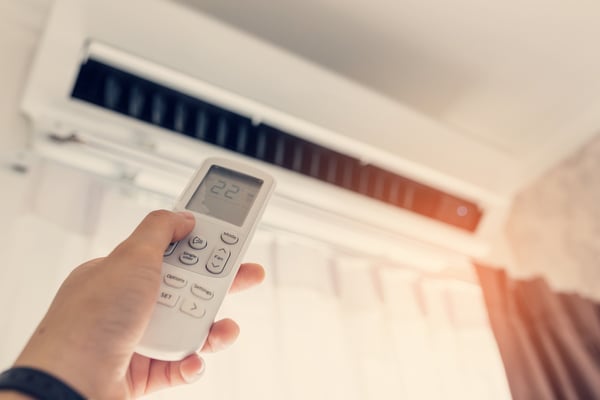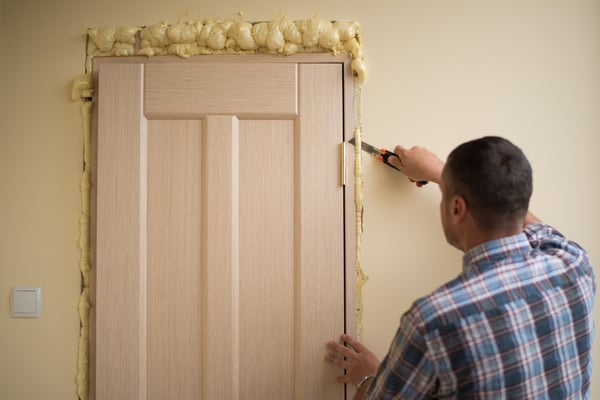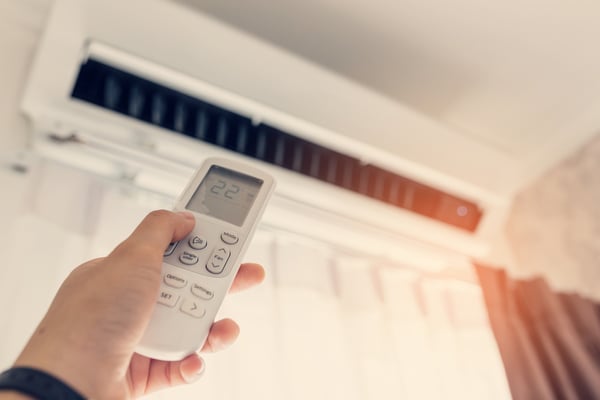In most homes and commercial buildings, the air conditioning system is responsible for the majority of energy consumption in the summer. Electricity costs are even higher when AC units are old and inefficient, or when buildings have poor insulation and air leakage problems. However, there are many energy efficiency measures that can reduce cooling costs.
Every HVAC project is unique, but there are three main strategies for reducing air conditioning costs: upgrading to more efficient units, improving the building envelope and using smart controls.
- A more efficient air conditioner uses less electricity for a given cooling load.
- A well-insulated, airtight building envelope keeps summer heat out more effectively, reducing the workload on AC systems.
- Smart controls ensure that the air conditioning only works when necessary, optimizing energy consumption.
When these three measures are implemented together, it is possible to achieve the lowest possible cooling cost for a building.
Upgrade your air conditioning system and reduce your energy bills during the summer.
If you plan to upgrade your air conditioning systems, the best recommendation is to start your project before summer. When the warmer months arrive, the demand for installation and maintenance services is greater. Additionally, your AC system may stop working during the upgrade, which causes discomfort to building occupants.
Tip #1 – Upgrading to a More Efficient Air Conditioning Unit

There are many ways to reduce cooling costs in a building. However, you'll likely achieve the biggest dollar savings by upgrading major HVAC equipment . For example, if you replace an old window-style air conditioner with a modern, efficient mini-split unit, you will likely achieve energy savings of over 70%.
There are two important things to keep in mind if you are planning a complete upgrade of your air conditioning equipment:
- Make sure you have an accurate project budget so you don't have to deal with unexpected expenses during your AC upgrade.
- Plan your project well in advance so you'll have your new AC unit operational when summer arrives.
Energy efficiency metrics change depending on the type of AC equipment you're dealing with. Split unit systems use the Seasonal Energy Efficiency Index (SEER), packaged rooftop units generally use the Integrated Energy Efficiency Index (IEER), and cooling plants use kilowatts of electricity per ton of cooling (kW/ton). You may also find metrics like Coefficient of Performance (COP) or Energy Efficiency Ratio (EER), which are not for a specific type of equipment.
In general, cooling costs decrease as the numerical value of the efficiency rating increases. For example, a SEER 26 mini-split has half the power consumption of a SEER 13 unit. The main exception is for kW/ton in cooling plants, where a lower numerical value means higher efficiency. For example, 0.7 kW/ton means 30% less energy consumption than 1 kW/ton.
Tip #2 – Using smart controls for air conditioning systems

When a building does not require cooling, running air conditioning is a waste of energy, regardless of its efficiency. However, energy is also wasted when the entire refrigeration capacity is used with partial occupancy. Unfortunately, this is very common in buildings, and many AC systems run at full power without considering the actual cooling needs .
For example, a space cooling system may need to operate at full capacity on a hot summer day when the building is full. However, this is not necessary if a building is partially full on an early summer day, before peak temperatures arrive.
Smaller air conditioning systems can be automated with smart thermostats, while larger commercial systems will need building controls. However, some modern chillers come with built-in automation features and additional controls are only required for components such as hydronic pumps and air handlers .
The exact savings from smart AC controls will vary depending on building characteristics and local climate. However, the U.S. Department of Energy provides a helpful rule of thumb: Adjusting your thermostat 7 to 10°F 8 hours/day will reduce your HVAC costs by 10%.
Tip #3 – Keep outside heat in with an efficient building envelope

The uncontrolled movement of heat in and out of a building represents a waste of energy and there are two main ways this can happen:
- Heat conduction through poorly insulated surfaces. These can be walls, roofs, floors, basements, attics, etc.
- Air leakage between the interior and exterior of the building, or between conditioned and unconditioned spaces.
There are simple ways to improve a building's envelope with minimal disruption, such as adding spray foam insulation and caulking. On the other hand, you can achieve a big R-value improvement with a deep energy retrofit project. However, this type of project is more disruptive and capital intensive. An efficient building envelope saves energy year-round as it supports both heating and air conditioning systems.

